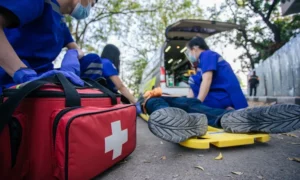Bicycling is a popular mode of transportation and a favorite recreational activity for millions of people around the world. However, it is important to acknowledge that bicycling, like any other activity, comes with its share of risks. Bicycle accidents can lead to serious injuries and even fatalities. In this article, we will delve into the science behind bicycle accidents and explore preventive measures to ensure safer cycling experiences.

Understanding Bicycle Accidents
Bicycle accidents can occur due to a variety of factors, ranging from environmental conditions to human behavior. By understanding the science behind these accidents, we can take proactive measures to prevent them.
Environmental Factors
- Road Conditions: Poorly maintained roads, potholes, loose gravel, and uneven surfaces can increase the risk of bicycle accidents. Local authorities should regularly inspect and maintain cycling infrastructure to ensure safe riding conditions.
- Weather Conditions: Adverse weather conditions such as rain, snow, or fog can affect visibility and reduce traction, making cycling more hazardous. Cyclists should be aware of weather forecasts and take appropriate precautions when riding in challenging conditions.
Human Factors
- Distracted Riding: The use of mobile devices, listening to loud music, or engaging in conversations while cycling can distract riders and compromise their ability to react to potential hazards. Cyclists should prioritize focusing on the road and avoid distractions.
- Impaired Riding: Riding under the influence of alcohol or drugs significantly impairs a cyclist’s coordination, judgment, and reaction time, increasing the likelihood of accidents. It is crucial to promote responsible alcohol consumption and discourage cycling while impaired.
Preventive Measures for Safer Cycling
While accidents cannot be completely eradicated, there are several preventive measures that cyclists can adopt to enhance their safety on the road.
Protective Gear: Essential Shields
Wearing appropriate protective gear is crucial for reducing the risk of severe injuries in the event of an accident. The following gear should be used by every cyclist:
- Helmet: Wearing a well-fitted, certified helmet can protect against head injuries and minimize the risk of traumatic brain injuries. Cyclists should choose helmets that meet safety standards and replace them after any significant impact.
- Reflective Clothing: Wearing high-visibility clothing and accessories, especially during low-light conditions, enhances a cyclist’s visibility to motorists. Reflective vests, ankle straps, and lights help increase awareness and reduce the likelihood of collisions.
- Knee and Elbow Pads: Pads provide an additional layer of protection for vulnerable areas and reduce the risk of fractures and abrasions in case of a fall or collision. Properly fitted pads can absorb impact and prevent injuries.
Safe Riding Practices: Rules of the Road
Adopting safe riding practices can significantly contribute to accident prevention and promote harmony between cyclists and motorists.
- Obey Traffic Laws: Cyclists should adhere to traffic regulations, including traffic signals, stop signs, and speed limits. It is essential to communicate intentions using hand signals and maintain a predictable riding pattern.
- Defensive Riding: Anticipating potential hazards and maintaining a defensive riding approach is crucial. Cyclists should stay vigilant, anticipate driver behavior, and keep a safe distance from parked cars to avoid accidents caused by sudden door openings.
- Visibility Enhancement: Cyclists should equip their bicycles with front and rear lights, reflectors, and bell/horn to make their presence known to other road users. Bright, contrasting colors for clothing and accessories further enhance visibility during daytime riding.
- Road Positioning: Cyclists should position themselves visibly and assertively on the road, riding in a straight line away from the curb. This practice ensures that motorists can see them and prevents accidents caused by drivers misjudging their position.
Understanding the factors that contribute to bicycle accidents and adopting preventive measures can go a long way in ensuring safer cycling experiences. By recognizing the environmental and human factors that influence accidents and embracing protective gear and safe riding practices, cyclists can minimize their risk and enjoy the many benefits that bicycling offers. If an accident does occur, a bicycle accidents lawyer can assist with legal options to help you move forward.


































